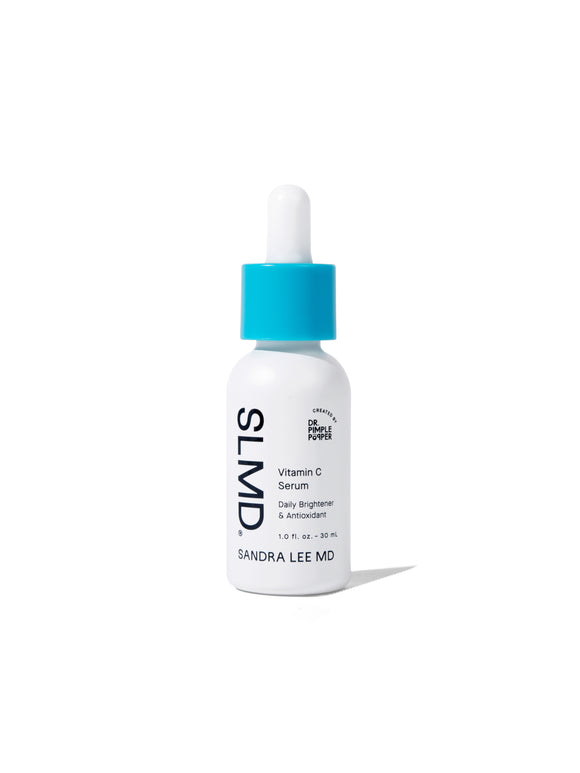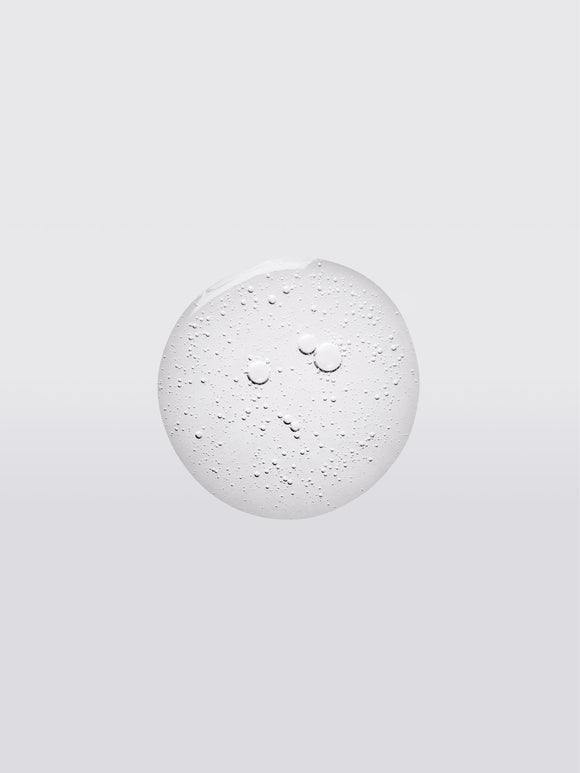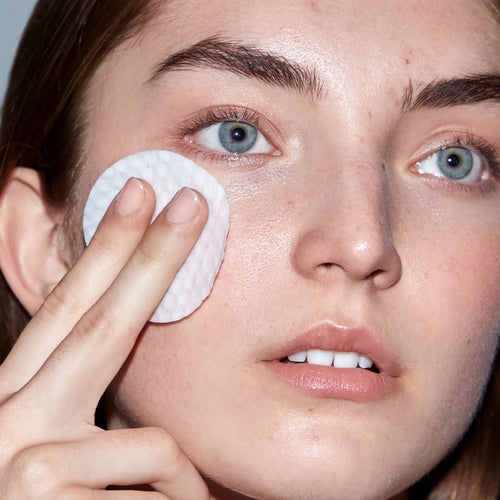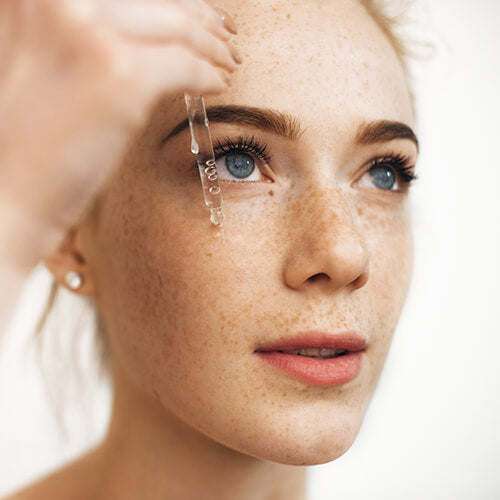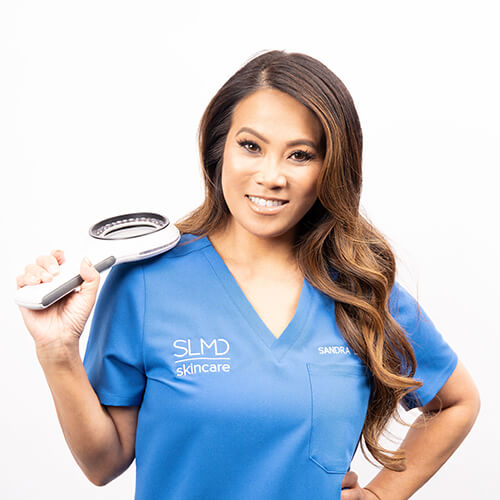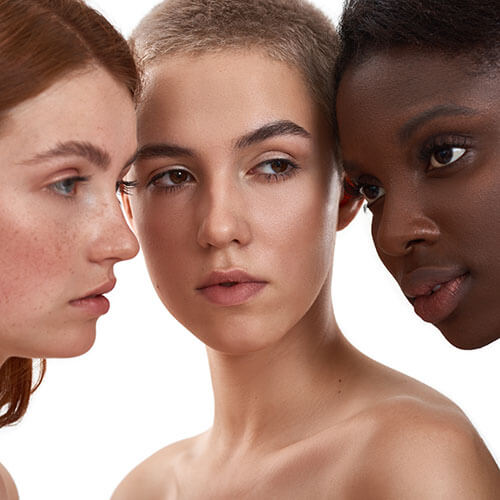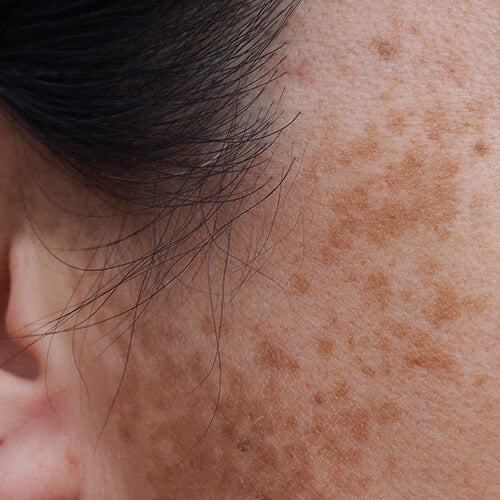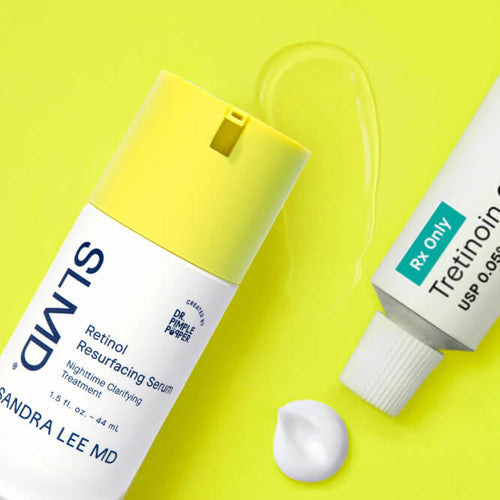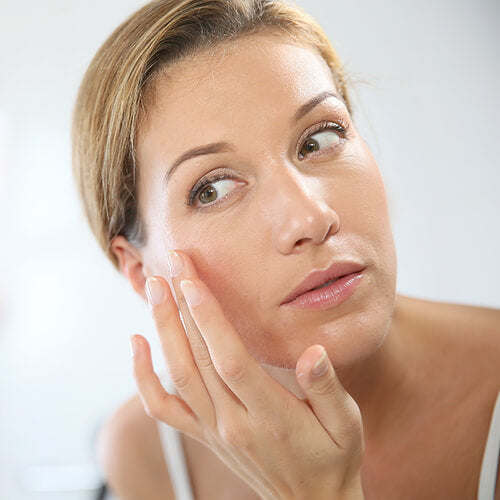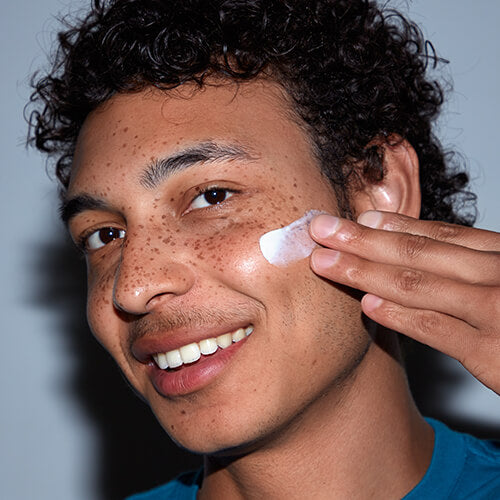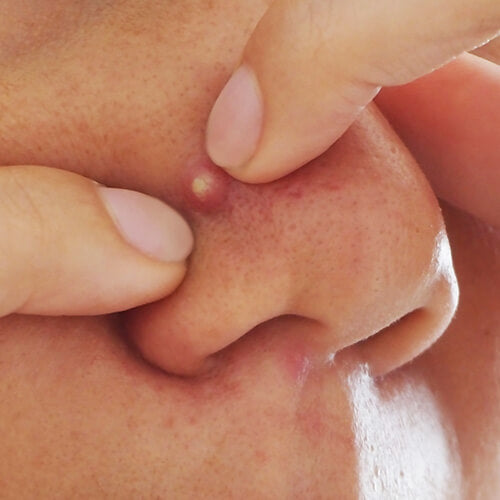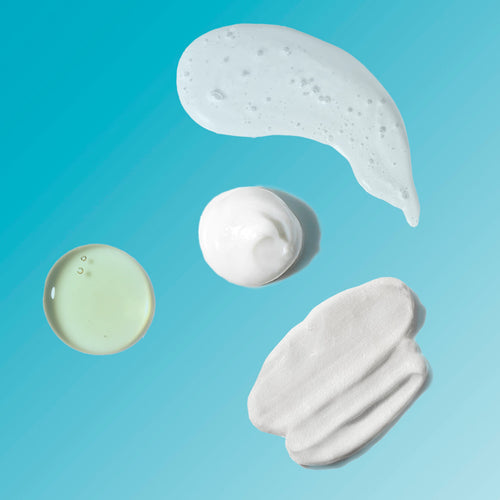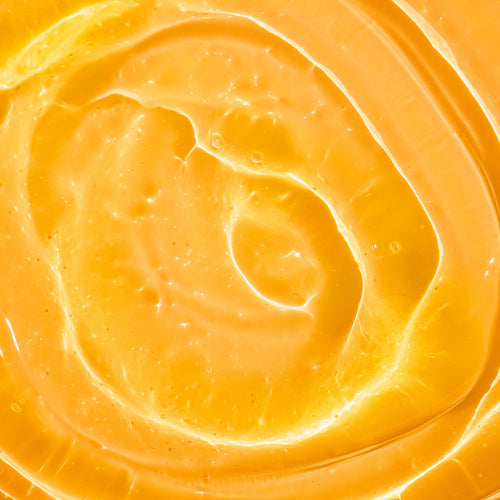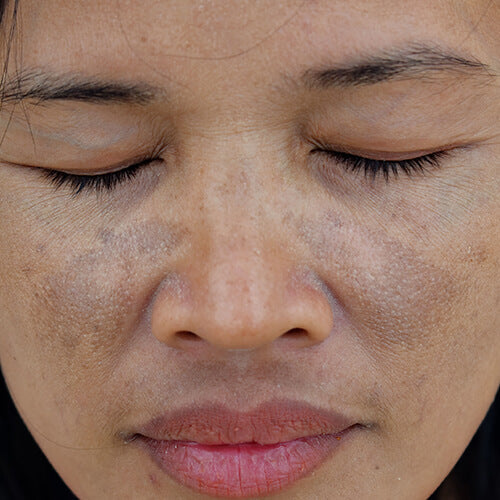
Could My Dark Spots Be Melasma?
Melasma is one of the most common types of hyperpigmentation: dark marks caused by excess melanin in the skin. Here's how to tell the difference between melasma and other types of hyperpigmentation — and a list of what skincare ingredients work best for treating the pigmented patches caused by this skin disorder.Published:
3 minute read
Dark marks are easy to spot — but what’s less obvious is exactly what type of hyperpigmentation you’re dealing with. Figuring out what’s provoking your pigmented patches is important, though, for both treatment and prevention.
We’re taking a closer look at one of the most common — and temperamental — types of hyperpigmentation: melasma. Learn how to tell the difference between melasma and other forms of hyperpigmentation, and what you can do to help manage (or avoid!) the condition.
Article Quick Links
What causes dark marks on skin?
Many of us are familiar with dark marks (aka hyperpigmentation): those pink, red, tan, brown or black patches that show up on our skin. It’s the result of excess melanin — the pigments that give our skin (and other organs, like our eyes) their characteristic color.
While melanin itself is useful and protective, too much of it leads to all kinds of common skin conditions, that are typically categorized as:
- Post-inflammatory hyperpigmentation (PIH)
- Congenital/chronic disorders
- Radiation damage (from light/heat)
What’s the difference between hyperpigmentation and melasma?
Melasma is a complex form of hyperpigmentation, because its exact causes are unknown. What we can say for certain: all melasma is hyperpigmentation, but not all hyperpigmentation is melasma. It’s estimated that about five million Americans — the vast majority of them women — experience melasma.
The condition is thought to be triggered most often by:
- Hormonal fluctuations: why it’s often called “the mask of pregnancy”
- Sunlight: UV damage can bring on or worsen the disorder
- Genetics: the condition tends to run in families
- Skin color: darker skin tones are more susceptible
Though it’s best to consult with your dermatologist to confirm, in the following sections we’ll explain how to determine whether your excess melanin is likely melasma — and what you can do about it.
What does melasma look like?
The simplest way to differentiate melasma from other forms of hyperpigmentation is to look for its typical characteristics:
- Commonly located on the forehead, cheeks, upper lip; sometimes jaw, neck and forearms
- A symmetrical pattern of tan, brown, gray/brown macules (aka patches)
- Areas are flat, painless, and devoid of scales or pimple-like bumps
- Can worsen or subside depending on varying exposure to triggers
How do you treat melasma?
Let’s get this out of the way: there is no known cure for melasma. And because it’s so finicky, treatments that excel at zapping other forms of hyperpigmentation (like lasers for liver spots), can leave you worse off than where you started.
Here’s the good news: a roster of tried-and-true dermatological ingredients — plus a crop of newcomers — have shown promise in fading melasma’s pesky patches. Plus, depending on the cause, it may spontaneously fade — like after a pregnancy, or stopping oral contraceptives, for example.
Dermatologists will tell you that prevention is the best medicine — but here’s a roundup of potent ingredients proven to minimize melasma in some patients.
- Broad-spectrum sunscreen: protects against UV damage; try SLMD Daily Moisturizer with SPF 15
- Azelaic acid: inhibits action of tyrosinase, an enzyme necessary for melanin production; try AHA/BHA Swipes
- Retinol: encourages old, pigmented cells to slough off and also inhibits tyrosinase; available in Retinol Resurfacing Serum
- Tranexamic acid: another tyrosinase inhibitor; also available as an oral prescription
- Niacinamide: prevents transfer of melanosomes into keratinocytes
- Kojic acid: an antioxidant derived from fungi, inhibits tyrosinase
- Alpha arbutin: a hydroquinone derivative that inhibits tyrosinase without damaging melanocytes
- Vitamin C: an antioxidant that interferes with both tyrosinase and melanin; try Vitamin C Serum and Facial Moisturizer with Vitamin C
- Licorice root extract: an antioxidant that decreases melanin synthesis and reduces free radicals

Dr. Lee's Last Word
As a dermatologist, I treat all types of hyperpigmentation. Melasma is one of the trickier ones — but we do have a lot of options to manage it. I always tell patients to start slowly, and see how their skin responds to some of our over-the-counter regimens. Retinol, hydroquinone, and some of these newer ingredients like kojic acid, can make a big difference, but you have to be patient — and be very diligent with your sunscreen!





